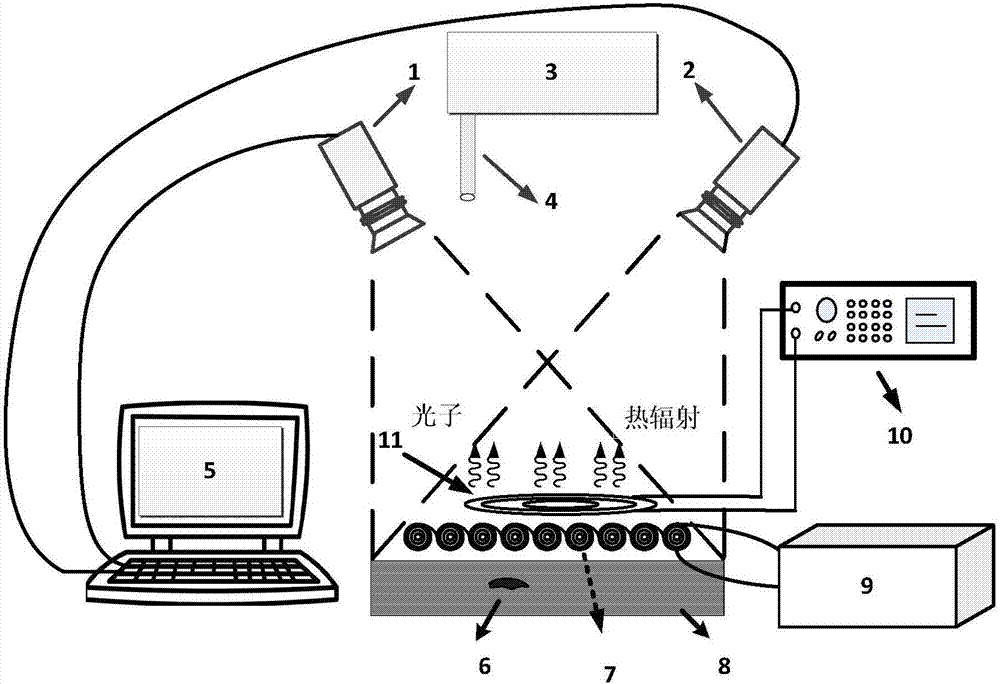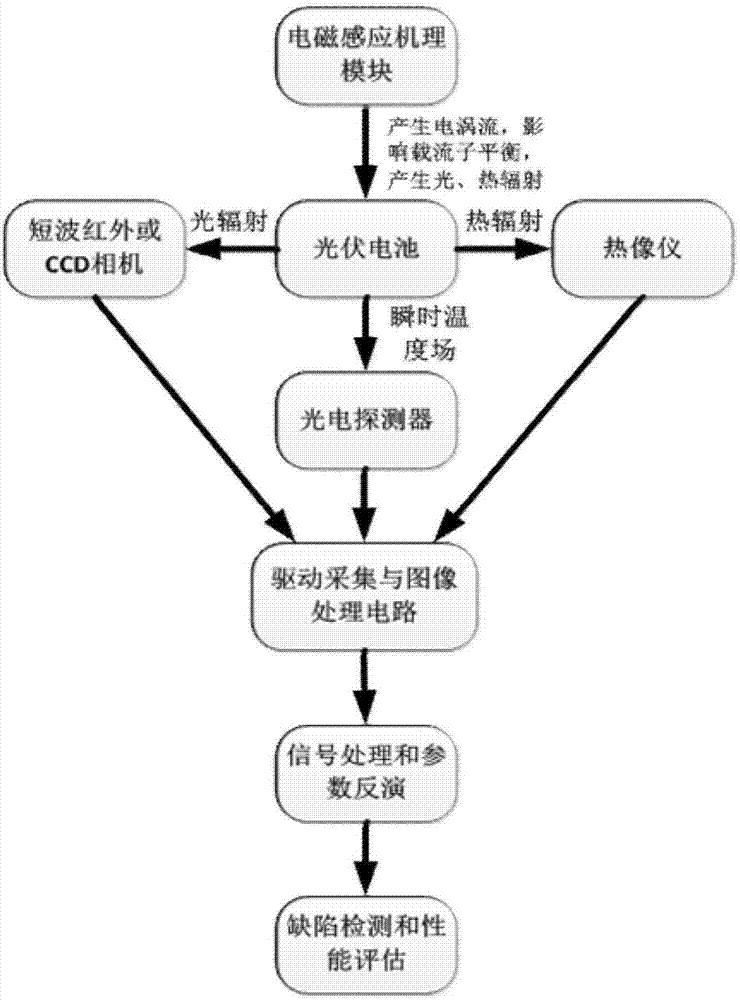Photovoltaic cell non-destructive detection method and photovoltaic cell non-destructive detection system based on induction photothermal radiation
A photovoltaic cell and non-destructive testing technology, applied in the monitoring of photovoltaic systems, photovoltaic power generation, photovoltaic modules, etc., can solve problems such as high failure rate, grid line interface failure, photoelectric performance degradation, etc., and achieve multiple evaluation parameters and rapid detection means , Improve the effect of innovation ability
- Summary
- Abstract
- Description
- Claims
- Application Information
AI Technical Summary
Problems solved by technology
Method used
Image
Examples
specific Embodiment approach
[0041] A specific embodiment, a method for non-destructive testing of photovoltaic cells based on inductive photothermal radiation, comprising the following steps:
[0042] 1) Under a given light and temperature condition, place the photovoltaic cell on the test platform, and apply a pulse signal to the excitation coil 11 by using the electromagnetic induction excitation module 10 .
[0043] 2) After the photovoltaic cells and components 8 are electromagnetically excited by the excitation coil 11, eddy current field distribution is generated on the surface, which breaks the internal carrier balance and generates light radiation and heat radiation.
[0044] 3) The temperature distribution data on the surface of the photovoltaic cell is collected by the infrared thermal imager 2 to form a thermal image, and the position of the damage is judged by using the abnormality of the temperature field near the damage or the defect 6; and the photodetector 3 is controlled by the scanning m...
Embodiment approach
[0057] Specific implementation methods: such as figure 2As shown, a metal plate is set on an insulating test platform, and the test platform is made of insulating and heat-preserving materials. Short-wave infrared camera or CCD camera 1, thermal imager 2, defect detection and performance evaluation module. The defect detection and performance evaluation module includes drive acquisition and image processing circuits. In a period of time, there are damage or defect 6 regions, the temperature rises significantly, and the radiative recombination of carriers is less. The light and heat radiation distribution data of photovoltaic cells and components 8 are collected through the imaging system, and the light and heat distribution images can be generated after being processed by the drive acquisition and image processing circuit. Make judgments based on local defects to avoid failure problems during actual use. Secondly, use the planar array induction coil 7 composed of multiple ...
PUM
 Login to View More
Login to View More Abstract
Description
Claims
Application Information
 Login to View More
Login to View More - R&D
- Intellectual Property
- Life Sciences
- Materials
- Tech Scout
- Unparalleled Data Quality
- Higher Quality Content
- 60% Fewer Hallucinations
Browse by: Latest US Patents, China's latest patents, Technical Efficacy Thesaurus, Application Domain, Technology Topic, Popular Technical Reports.
© 2025 PatSnap. All rights reserved.Legal|Privacy policy|Modern Slavery Act Transparency Statement|Sitemap|About US| Contact US: help@patsnap.com


